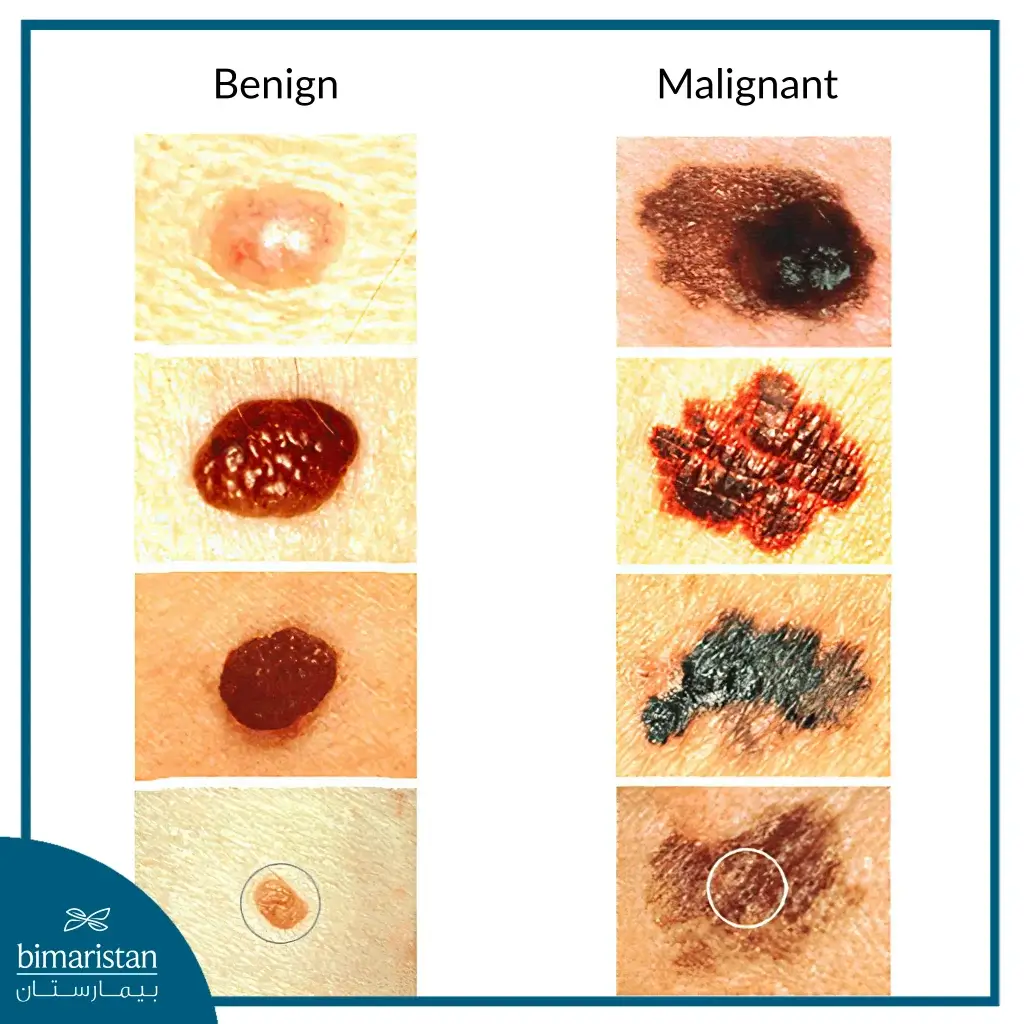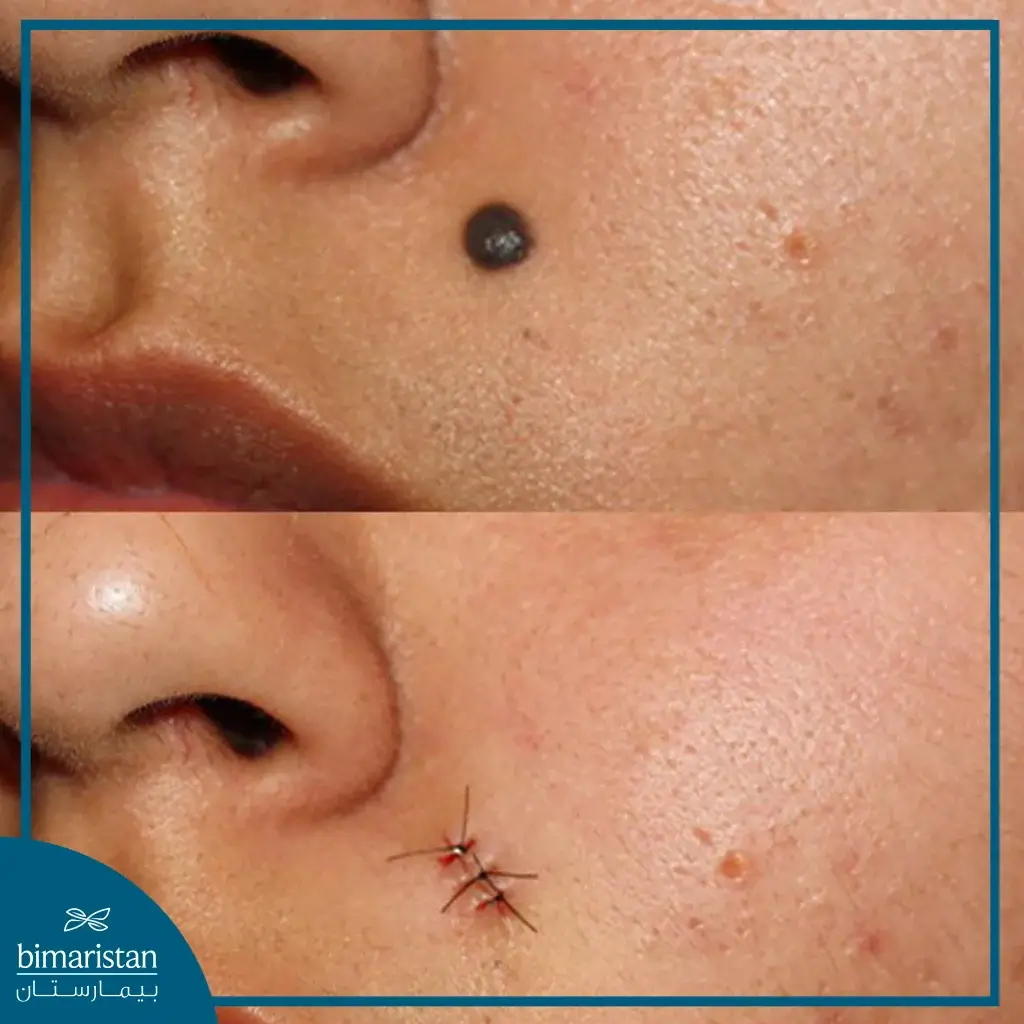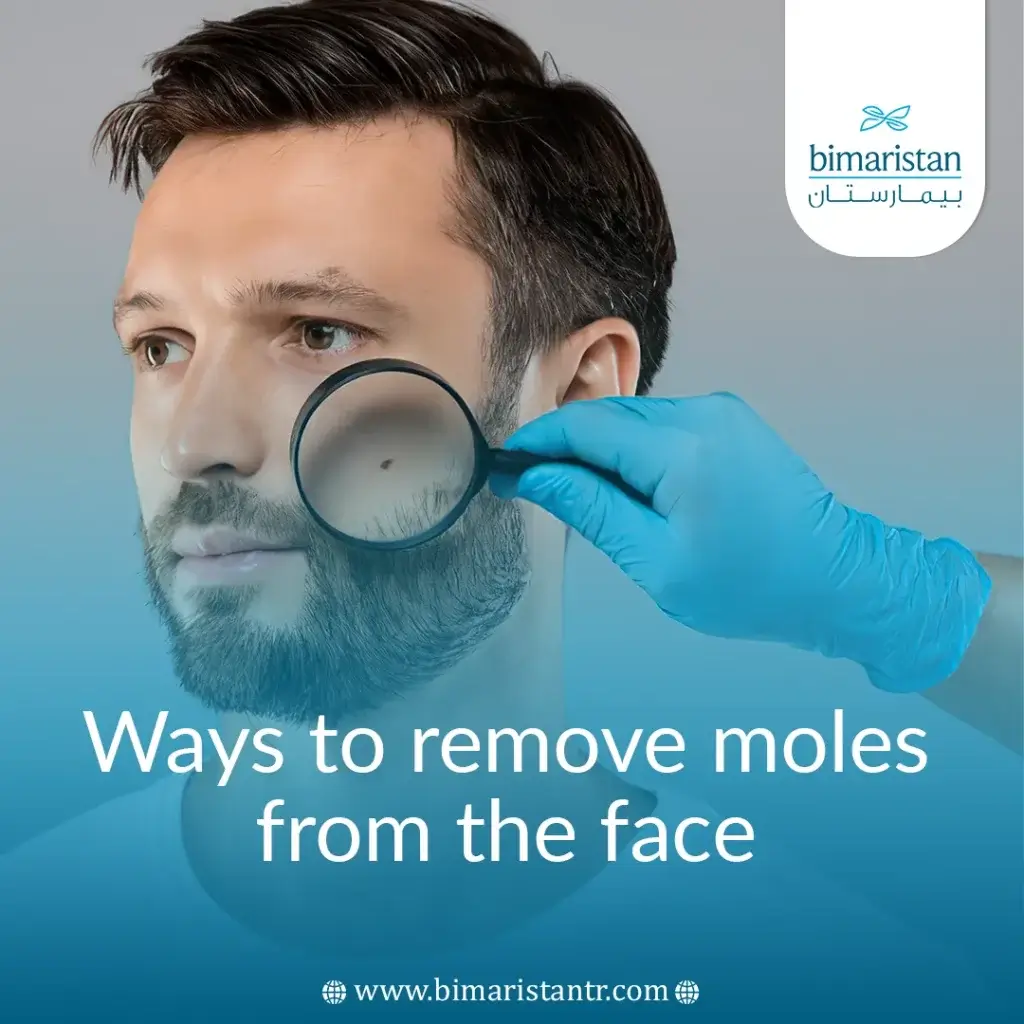Most adults have between 10 to 40 common moles, which can grow anywhere on the surface of the body but are usually found above the waist in sun-exposed areas, such as the hands, trunk, or face.
Moles that appear on the face can be a source of discomfort for many people, leading them to explore ways to remove moles from the face for many reasons. However, there is no medical necessity to remove benign and common moles from any part of the body. It may be necessary to remove moles from the face due to significant changes in its appearance, prominence, or size, a decision that a specialist should determine. Nevertheless, the reason for removing benign moles, particularly ones that on the face, is often cosmetic. With advancements in medicine, there are many available methods to remove moles from the face.

Mole Removal by Laser
Some moles can be removed using laser treatment, such as minimal, flat, non-cancerous moles. During laser removal, the doctor will use bursts of light radiation to destroy the mole tissue, mainly when removing a mole from the face. The patient may need more than one session to completely remove moles from the face using laser therapy. Laser mole removal can also be a good option for moles located in hard-to-reach areas, such as the ears, or in sensitive or always visible areas like the face. Additionally, the laser can be a suitable option for removing more than one mole at the same time, including mole removal from the face.

Risks of Using Laser to Remove Moles from the Face
Laser mole removal is generally safe when performed by a trained and qualified doctor in laser safety. However, this treatment may carry some risks and complications like any other medical procedure. Complications such as pain, bleeding, and scarring are rare, but the most common risks include:
- Eye Injury: It is essential for both the specialist performing the treatment and the patient to wear protective eyewear, especially in cases that need to remove moles from the face
- Burns: The laser can burn the skin if not used correctly, leading to blisters and scars. This risk can be minimized by choosing a doctor certified in laser safety, as they can select settings such as wavelength, pulse duration, and intensity to optimize treatment for any lesion according to the patient’s skin type.
- Harm due to Misdiagnosis: Using laser treatment for melanoma may delay the detection of the disease in the future and worsen its prognosis. Therefore, patients should undergo several examinations by specialist doctors before undergoing this procedure.
Removing a Raised Mole with a String
Using string to remove a mole is an unsafe, ineffective, and unproven method. Some patients might tie a piece of string around a raised mole in the hope that it will fall off or disappear. However, this action can cause damage to the surrounding skin.
Remove moles from the face via Surgery
Most procedures for removing small moles are outpatient, meaning the patient can go home after the procedure is completed. The doctor first numbs the skin with a local anesthetic injected into the skin with a needle and then surgically removes the mole. Stitches may be needed to close the wound, which requires special care, and a follow-up appointment will be scheduled to remove these stitches.
Pain during the procedure is usually mild and may not be felt due to the small nature of the surgery and the use of anesthesia, but the patient may feel some pressure and temporary discomfort.

Scarring After Mole Removal
Scarring is a natural part of the healing process after any skin injury. All mole removal procedures will leave a scar, most of which will fade over time, becoming less noticeable and eventually disappearing. This is very important for all patients who need to remove moles from the face.
Some mole removal techniques are more likely to cause scarring than others. For instance, surgical excision, which involves cutting the mole and closing the wound with stitches, often results in a noticeable scar compared to techniques like laser excision or radiofrequency ablation, which destroys the mole without cutting the skin, thus causing less scarring.
Ways to Prevent and Minimize Scars from Mole Removal
Certain precautions can be taken to prevent or minimize scarring, especially when the scar is always visible, such as scars formed after cases that need to remove moles from the face. These precautions include:
- Proper Wound Care After Mole Removal: After mole removal, the dermatologist will clean the area, stitch it up, and cover it with a bandage. The wound should be kept clean and moist by washing it with mild soap, applying bacitracin ointment or petroleum jelly, and covering the wound with a bandage.
- Avoid Sun Exposure: Sun exposure can discolor the scar, making it darker. If the mole removal scar is still new, the patient should make efforts to keep it out of the sun, possibly by wearing a hat if the procedure was done to remove moles from the face and applying sunscreen once the wound has healed, or keeping it covered with a bandage.
- Avoid Stretching or Scratching the Scar: The scar can become larger or deformed if the patient stretches the skin while it is healing. Therefore, the patient should try to avoid stretching the skin that has the scar as it heals and should be careful when applying moisturizers and ointments to the scar.
- Opt for Laser Treatments and Light Therapy: Laser techniques are an excellent way to reduce the appearance of scars, especially those that change color due to various factors. Laser light stimulates collagen production and blends the pigmentation with the surrounding skin, improving red or pink scars.
Factors Contributing to Scarring After Mole Removal
Several factors can affect the likelihood of scarring after mole removal, including the size and location of the mole, the method used for its removal, the individual’s skin type, and the healing process. Factors that increase the risk of scarring include:
- The mole removal technique was used.
- The amount of skin stretched during the wound healing process.
- Skin color, as darker skin tends to scar more easily.
- The patient’s age, with younger patients more prone to scarring than older patients.
Mole Removal Cream
The Food and Drug Administration (FDA) advises consumers to avoid various mole removal products due to their potential harmful side effects and high risks. These products can cause skin injuries, infections that require antibiotics, scarring, and delays in the diagnosis and treatment of skin cancer. The FDA has received reports of people suffering from permanent skin injuries and infections after using products marketed as mole removers.
Products marketed as creams that cosmetically remove moles or other skin lesions often contain high concentrations of salicylic acid or other dangerous and disfiguring substances. These products may not remove the mole entirely, or if they do, they may cause permanent damage to the surrounding skin, such as scarring or skin discoloration. In many cases, the final result of using such products is more bothersome and noticeable than the original lesion, mainly if used to remove moles from the face.
A product claiming to be “natural” or “organic” does not mean it is harmless to the skin. Even products that claim to be “all-natural” or herbal may contain high concentrations of salicylic acid or other ingredients that can cause injury or infection. Even if salicylic acid is not listed as an ingredient in the cream, it does not mean the product is safe to use, particularly for using it to remove moles from the face or other sensitive areas.
Mole Removal by Electrocautery
Electrocautery: This is done using a specialized electric device that burns the mole’s tissue. This method is effective for removing certain types of moles and can reduce bleeding during the procedure. It is performed under local anesthesia to minimize pain.
Facial moles are common among many people and generally do not cause any health problems. However, it may be necessary to consult a dermatologist to determine the most appropriate and safest approach to mole removal if there is a desire or need to do so. This ensures that the procedure is effective and reduces the risk of scarring or complications. Regular skin monitoring and periodic evaluations are also important for early detection of any suspicious changes in moles, contributing to maintaining skin health and radiance.
Resources:
